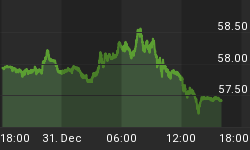When I picked up a copy of Bernard Baumohl's news book "The Secrets of Economic Indicators: Hidden Clues to Future Economic Trends and Investment Opportunities" (Wharton School Publishing) recently, I have to admit I was a little skeptical that the 366-page tome would live up to its title. If you're like me, you've read more than one economic title at one time or another and most of them are ideal for putting you to sleep. There's a reason why some call it "the dismal science" of economics.

I knew right away this book was going to be different in just the first three pages of introduction. This book was written on the personal level and in clear, simple language that even a novice would have no trouble in understanding. This book might well have been titled "Economic Indicators Simplified."
Baumohl's book is an excellent primer in understanding the economic indicators and how to apply them to predicting the future course of stock and bond markets, currencies and economic performance. But what makes his book so useful compared to other books that have been written on the subject is how it is organized in encyclopedic fashion to provide a run-down on every U.S. economic indicator of importance (47 total), plus some of the most important foreign economic indicators.
Each entry for the economic indicators listed in the book explains not only the what, why and how behind it but also what impact it can have on stocks, bonds and the dollar. For example, the entry for the Housing Starts and Building Permits indicator (pg. 169) is an explanation of why it is important, how it is computed, how it can be used to predict what's ahead for the economy, and its impact on each of the three markets mentioned previously. Baumohl also provides a rating for each indicator as to market sensitivity (high or low), where it can be found on the Internet, the time of its release during the calendar year, and the indicator's source.
Dilettante economists will appreciate the chapters on most influential economic indicators that are not as commonly known than say, the Producer Price Index (PPI). Baumohl explains several important indicators that can be used for privately forecasting economic growth that the mainstream press rarely makes mention of. He also explains how you can easily find these updated indicators (or compute them yourself) in most cases free of charge.
Baumohl's book would also be good for investors wanting to know more about the outlook for the ubiquitous housing market. The book contains several chapters on how to interpret the real estate-related indicators, including Housing Starts and Building Permits, Existing Home Sales, New Home Sales, the Housing Market Index, Weekly Mortgage Applications Survey and the National Delinquency Survey, and Construction Spending.
My personal favorite chapter was Baumohl's treatment of the Yield Curve (pg. 289) which I found to be the best explanation I've seen yet of this important forecasting tool. All in all, a very worthwhile addition to the library of anyone interested in the art and science of economic forecasting.
















